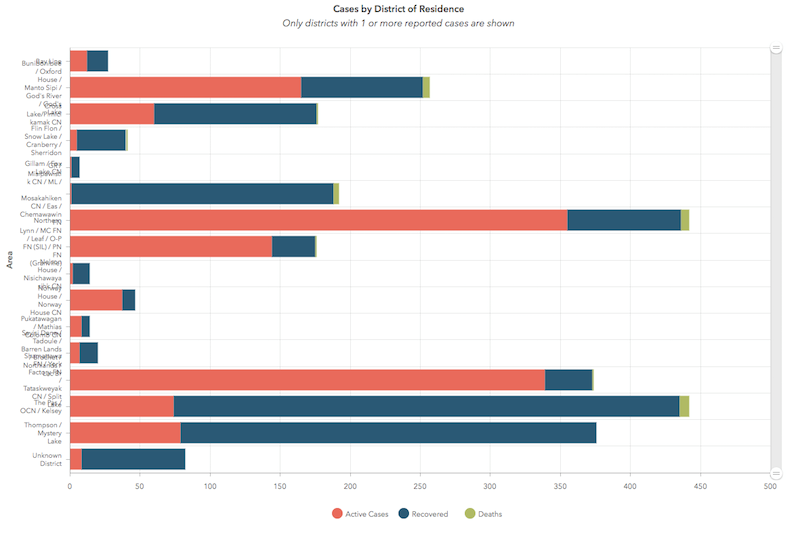Four northern health districts recorded double-digit increases in COVID-19 cases Jan. 14 and the region had 139 new cases overall, more than Winnipeg and the other three health regions in the province combined.
The health district that includes Lynn Lake recorded 57 new cases since yesterday and now has 144 active cases. The Northern (Island Lake) district had 40 new cases to bring their active total to 355. Seventeen new cases were recorded in the Thompson/Mystery Lake health district, which now has 79 active cases of the virus. Eleven new cases were recorded in the Cross Lake/Pimicikamak health district, which now has 60 active cases.
“Some of those are new positives from our provincial lab, some of them are confirmatory results where a point-of-care test was done already within the community a day or two prior to the result coming in and being made public,’ said Manitoba’s acting deputy chief public health officer Dr. Jazz Atwal at a Thursday media briefing. “We’re having a lot of activity in Lynn Lake, a little bit of activity in Thompson and then there’s the First Nations community of Garden Hill which has a lot of activity in relation to cases and an outbreak there as well.”
Gathering seemed to be the cause of at least some of the transmission, Atwal said.
“There were households who seemed to visit other households. That did occur. The extent to which I don’t know on a percentage basis but that did happen.”
Contacts of confirmed cases in Thompson and Lynn Lake are being notified by public health staff.
“It seems like the case and contact investigations are going well and people are being supported,” said Atwal, predicting that some of those contacts have likely caught the virus. “I think case numbers will probably go up a little bit before they come down.”
An organization representing Northern Manitoba First Nations says it is concerned by the high rates of virus transmission currently in the north.
“We are waiting for more information from our government partners at Indigenous Services Canada and the Northern Regional Health Authority regarding the epidemiology on why we are seeing such high rates of COVID-19 in the north,” said Manitoba Keewatinowi Okimakanak (MKO) Grand Chief Garrison Settee in a Jan. 14 news release. “We are not aware of what exactly is driving these growing numbers, but we are absolutely concerned about the health and wellness of citizens in MKO First Nations. First Nations leadership have always been worried about the disproportionate impact the COVID-19 virus would have on our communities once it arrived in Northern Manitoba. We have multiple ongoing systemic issues we need to address that exacerbate the impact of COVID-19 on our citizens. These are issues such as a lack of housing, a lack of access to robust health care services in our communities, and a boil water advisory that impacts one’s ability to reduce the risk of contracting COVID-19.”
For Manitoba as a whole, 261 new cases of COVID-19 were reported on Thursday, through two previously announced cases were removed from case totals, making a net increase of 259 cases.
There are 117 people in hospital with active COVID infections and 173 who had the virus but are no longer considered infectious. These numbers include 16 active cases in intensive care and 21 other people in intensive care who are no longer considered infectious. Twenty-three northerners are in hospital, 21 of whom have active infections. Three of them are in intensive care.
Two more deaths due to COVID-19 were reported in Manitoba Jan. 14, bringing the total since the pandemic began to 755.
Asked if public health orders might be eased for the rest of the province but remain the same for the north if current trends continue until the orders are set to expire Jan. 22, Atwal said it was possible.
“Everything is on the table. It’s going to be based on risk, based on epidemiology, based on a number of different indicators.”
The five-day test positivity rate in the province is 10 per cent.
“The Northern RHA (regional health authority) likely has a high positivity rate with all the new cases and the smaller population,” Atwal said.




